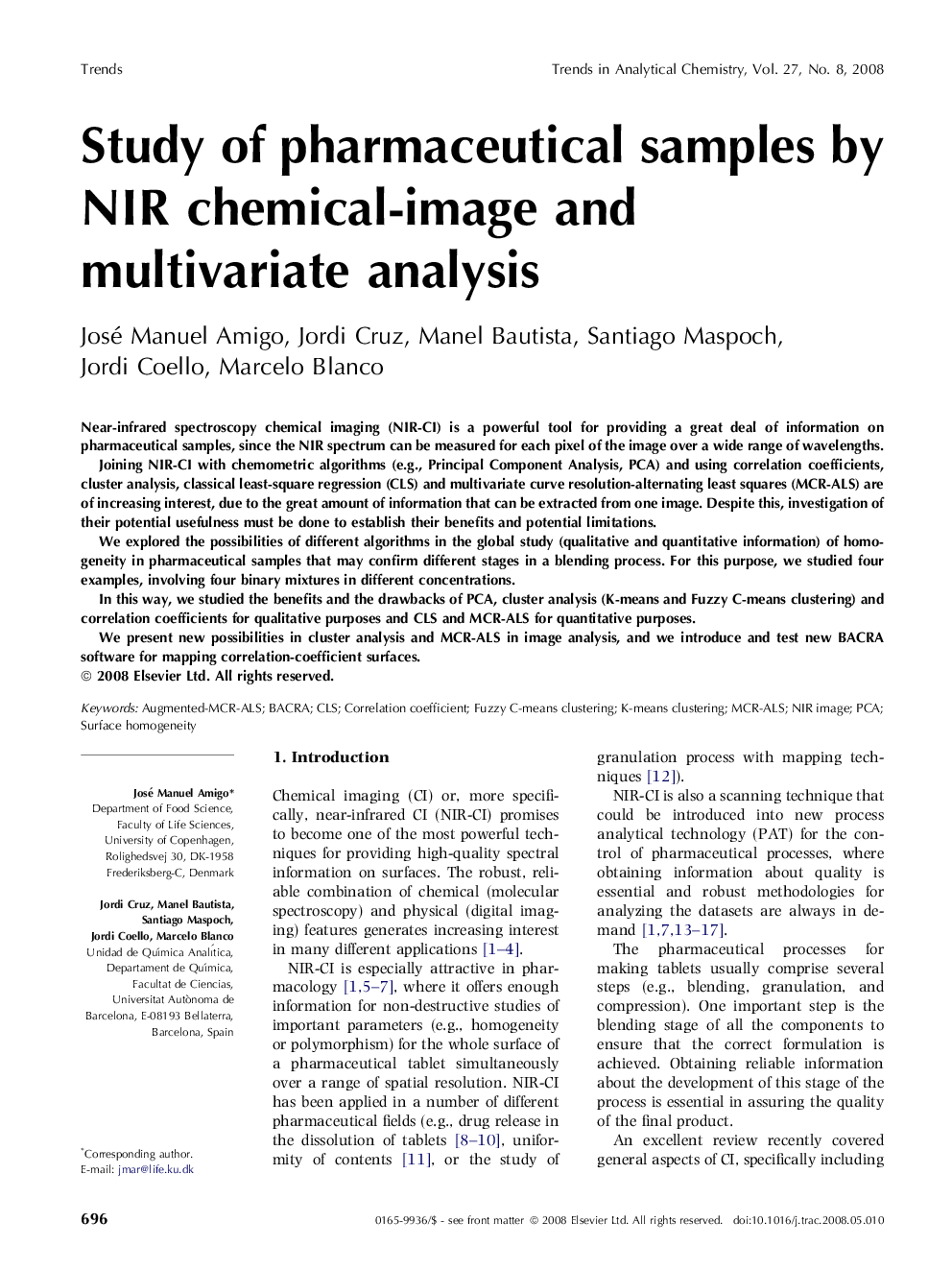| Article ID | Journal | Published Year | Pages | File Type |
|---|---|---|---|---|
| 1249407 | TrAC Trends in Analytical Chemistry | 2008 | 18 Pages |
Near-infrared spectroscopy chemical imaging (NIR-CI) is a powerful tool for providing a great deal of information on pharmaceutical samples, since the NIR spectrum can be measured for each pixel of the image over a wide range of wavelengths.Joining NIR-CI with chemometric algorithms (e.g., Principal Component Analysis, PCA) and using correlation coefficients, cluster analysis, classical least-square regression (CLS) and multivariate curve resolution-alternating least squares (MCR-ALS) are of increasing interest, due to the great amount of information that can be extracted from one image. Despite this, investigation of their potential usefulness must be done to establish their benefits and potential limitations.We explored the possibilities of different algorithms in the global study (qualitative and quantitative information) of homogeneity in pharmaceutical samples that may confirm different stages in a blending process. For this purpose, we studied four examples, involving four binary mixtures in different concentrations.In this way, we studied the benefits and the drawbacks of PCA, cluster analysis (K-means and Fuzzy C-means clustering) and correlation coefficients for qualitative purposes and CLS and MCR-ALS for quantitative purposes.We present new possibilities in cluster analysis and MCR-ALS in image analysis, and we introduce and test new BACRA software for mapping correlation-coefficient surfaces.
